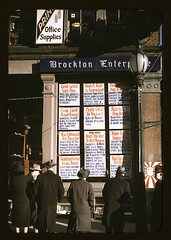
Want to hear a simple headline writing tip? It’s become extraordinarily popular recently, but the truth is that this headline secret has been used since the days of Claude Hopkins in the 1920s to get readers to stop and take notice.
It’s really easy too. And, it doesn’t even involve using words.
What do these headlines have in common?
“8 Habits of Highly Effective Copywriters”
This works because it promises something short (only eight items to remember) and offers a big promise. Learn a few new habits and your writing will be far more effective. The unspoken payoff is that you’ll then earn more and get more clients.
“How to Write a Blog Post in 15 Minutes”
This headline offers to help you do something hard (write a blog post) and cut the time needed to a fraction of what you probably expected it to take.
“Increase Your Blog Subscription Rate by 153%”
This promises specific, definite results. Not just 150%, but 153. The exact number makes the claim far more credible.
“103 Ways to Get Top Bloggers to Link to You”
We want more links because links can bring more traffic and more clicks. Offering over a hundred different ways to do it, and telling us that we can not only get those links, but receive them from top bloggers is a compelling promise.
15 Marketing Terms You Need to Know
The common theme is that they all have numbers in them. I know, everyone “hates” list posts, but they do get people to stop and look. And, the secret to successful marketing isn’t what you personally prefer. It’s what works.
Why numbers work
Numbers work because they force us to focus – and because they give us a finite, concrete sounding example of something; only 15 minutes to write a great post, or 103 ways to get noticed by blogging superstars. Spend a few minutes reading these tips and you’ll get something concrete and important when you’re finished.
The more specific the number, the better. For example, if you increased your subscription rate by 153%, don’t round it down to 150%, the “odd’ number looks more believable.
Lists and checklists
Lists help us process information and tell our brains that we’re getting a reward. A short list tells us that we can find out something useful in just a few minutes. A longer one shouts that it’s definitive and comprehensive.
A list called “five steps to getting clients on Facebook” tells us that if we just do five things, we’ll be able to turn our Facebook efforts into a powerful marketing tool. “101” Copywriting Tricks” promises information that will make our writing better and more effective, all in an easy-to-follow format. Just go through the list and you’ve accomplished something big.
Bullet points and lists may be the “fast food” equivalent of post writing, but they’re easier to read (and finish) than a gourmet meal of long paragraphs.
Just follow the list! You’re now a better writer, a twitter guru, or irresistible to reporters.
And, who can resist something that will make you irresistible?




